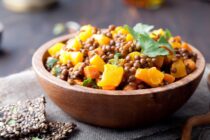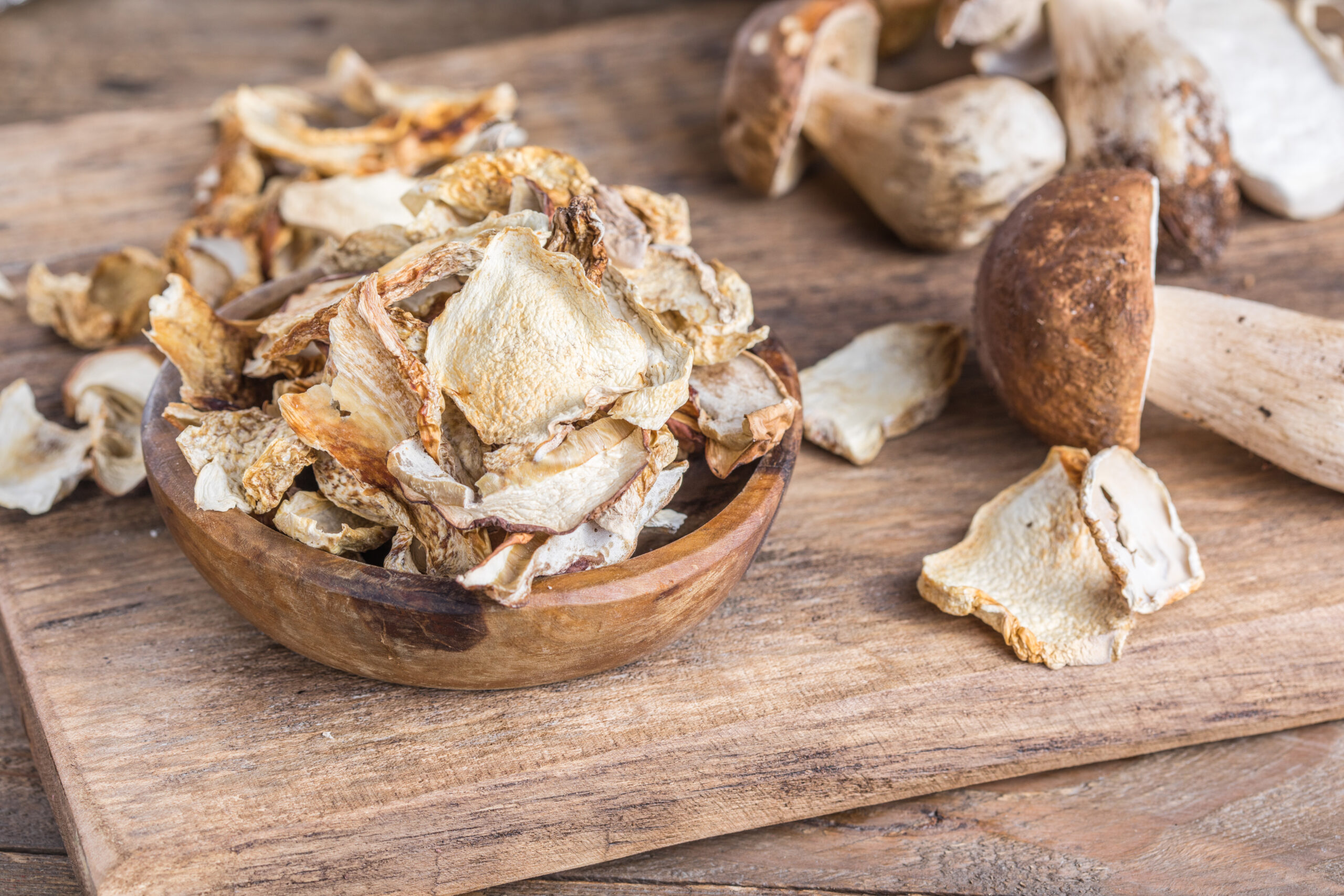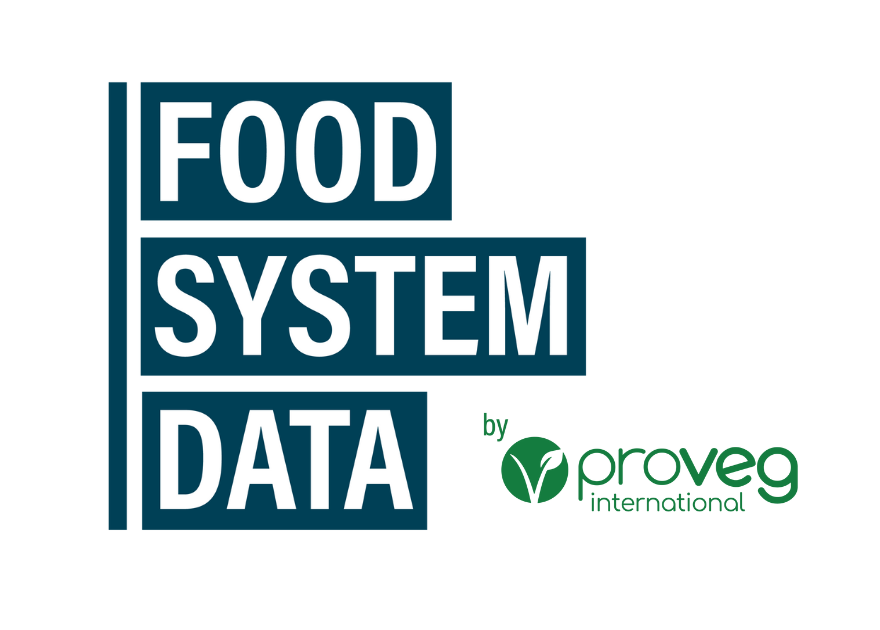A sufficient intake of vitamin D is particularly important for our bone health and to support the immune system. The good news is that, with enough exposure to sunlight, our body can produce its own vitamin D.
Vitamin D is a fat-soluble vitamin that is primarily stored in the fatty tissue and skeletal muscle. Because the human body can produce vitamin D through the skin, it’s not classed as a conventional vitamin but rather as a hormone.
Functions of vitamin D
Vitamin D maintains the concentration of calcium in our blood.1 It’s essential for the regulation of calcium absorption in the intestine and the reabsorption of calcium in the kidneys, as well as for the transfer of calcium and phosphate from our bones if the body’s supply gets too low.2 Provided that there is sufficient calcium intake, vitamin D stimulates bone-forming cells (called ‘osteoblasts’) in order to build bone mass.3 Vitamin D doesn’t just act on the body’s bones though – vitamin-D receptors are found in most human cells and tissues, particularly in the cardiovascular and immune systems, where it regulates the formation of specific immune cells that play a role in fighting off illnesses.4 Additionally, the pancreas uses vitamin D to secrete insulin, which is why vitamin D is necessary for the regulation of insulin and the prevention of diabetes.5
According to recent research, vitamin D also influences the possible onset of various diseases. For example, a good supply of vitamin D has been shown to inhibit the reproduction of tumor cells such as cancer cells in the colon.6 7 It can also reduce the risk of cardiovascular disease, hypertension, chronic inflammatory bowel disease, multiple sclerosis, dementia, and type 1 diabetes.8 9 However, further research is still needed, especially when it comes to a healthy population with no vitamin-D deficiencies.
Sources of calcium in a vegan diet
There is still a lot of misinformation about vegan diets, including the myth that people need to consume dairy products in order to get enough calcium. In this article, ProVeg looks at the role of calcium in our bodies and shows that everyone’s calcium requirements can be met by a plant-based diet.
Vitamin D in food
Only a small number of foods that contain vitamin D are suitable for a vegetarian or vegan diet. In conventional dairy products, the concentration of vitamin D fluctuates seasonally because cows produce significantly more of the so-called ‘sun vitamin’ during the summer months (if they have access to pastures – otherwise their feed needs to contain a supplement). This is also why, since the 1980s, many countries have started fortifying conventional milk and dairy products with vitamin D, along with margarine and infant formula. Today, food fortification is used worldwide.10 11 Other sources of vitamin D include various mushrooms (such as button mushrooms and wild mushrooms), but only if they are irradiated with UV-B light.12
Vitamin D and sunlight
With sufficient exposure to sunlight, the human body’s vitamin-D requirements are covered by the endogenous production of the vitamin in response to the ultraviolet radiation (UV-B light) emitted by the sun – however, any deficits need to be covered by nutritional intake.13 Getting enough vitamin D from the sun requires regular outdoor exposure to sunlight (in summer, 15-30 minutes in the midday sun on a clear day is sufficient – ensure that your face, hands, and lower arms are exposed). However, the correct amount of sunlight needed to satisfy individual vitamin-D requirements is difficult to estimate accurately, since it depends on many factors, including skin pigmentation, age, latitude, season, and time of day.14
Vitamin-D deficiency
During the winter months, UV-B light is largely filtered out of the atmosphere due to the change in the angle of the sun’s rays. This means that in Central and Northern Europe, the body cannot produce enough vitamin D to ensure a good supply all year round. Most people living in the Global North do not receive enough UV-B radiation in winter to produce sufficient vitamin D. Age can further complicate the level of sunlight exposure needed, since adults over the age of 70 typically need almost three times as much sun exposure than a child does in order to produce the same amount of vitamin D.15
Daily requirement
Depending on age, geographical location, dietary preferences, and skin color, a daily supplemental dose of 10–50 micrograms (400-2000 IU – IU means international units) of vitamin D may be needed to achieve optimal serum levels.16 Because it’s difficult to suggest a specific dosage that works for everybody worldwide, each country has its own suggested daily dosage. However, between 34% and 40% of the US, European, and African populations, are living with serum vitamin-D concentrations classified as deficient (below 20 mg/mL) and either need more exposure to the sun or increased vitamin-D intake.17
Recommendations in the USA
In the USA, the National Institute of Health recommends the following daily dosages:18
*Adequate Intake (AI)
Recommendations in Europe
In Europe, the European Food Safety Authority provides risk-management advice to countries, and each of them can make its own recommendations. The Panel on Dietetic Products, Nutrition, and Allergies defines an adequate intake of vitamin D as 15 µg per day for healthy individuals over one year of age. This includes pregnant and lactating women. For infants aged 7-11 months, the recommendation is 10 µg per day.
Taking into account the overall evidence, the panel considers a serum 25(OH)D concentration of 50 nmol/L as a suitable target value for all population groups:19
- For adults, an adequate intake of vitamin D is 15 μg/day.
- For children aged 1-17, an adequate intake of vitamin D is 15 μg/day.
- For infants aged 7–11 months, an adequate intake for vitamin D is 10 μg/day.
- For pregnant and lactating women, the panel sets the same adequate intake as for non-pregnant non-lactating women, i.e. 15 μg/day
Recommendations in the UK
In the UK, populations the recommended daily dosages are:20
- Adults and children over the age of 1 need 10 micrograms of vitamin D a day. This includes pregnant and breastfeeding women and people at risk of vitamin D deficiency.
- Babies up to the age of 1 need 8.5 to 10 micrograms of vitamin D daily.
- Babies from birth to 1 year of age should have a daily supplement containing 8.5 to 10 micrograms of vitamin D throughout the year if they are: breastfed or formula-fed and consume less than 500 ml (about a pint) of infant formula a day since infant formula is already fortified with vitamin D.
- Children aged 1 to 4 should be given a daily supplement containing 10 micrograms of vitamin D throughout the year.
Recommendations in South Africa
In South Africa, the National Institute of Health recommends the following daily intake of Vitamin D:21
- Infants 0-12 months: 400 IU/10 mcg
- Adults, until the age of 70, and children over the age of 1: 600 IU/15 mcg
- Adults over the age of 70 years: 800 IU/20 mcg
Summary of national recommendations
Vitamin-D levels can be measured with a blood test
The body’s vitamin-D supply can be determined by measuring the level of 25-OH vitamin-D3 (calcidiol) in the blood. The precise vitamin-D serum levels that are optimal and safe for skeletal health and the non-skeletal actions remain contentious. However, many experts consider the optimum level to prevent auto-immune diseases and other illnesses to be at least 75 nmol/l or 30 ng/ml (measured in nanomoles per liter, and nanograms per milliliter, respectively).22 In order to achieve this value in the Northern Hemisphere in winter, about 40 µg (micrograms) of vitamin D per day is required.23 24
Effects of a vitamin-D deficiency
Vitamin-D deficiency (<20 ng/ml) and insufficiency (20-30 ng/ml) – caused by insufficient sunlight exposure, inadequate dietary sources, and malabsorption – affect almost a billion people worldwide.25 The consequences of a deficiency are numerous, but the main result is that the body cannot sufficiently absorb calcium from food, which can lead to increasing decalcification of the bones, along with nervous system disorders. This can lead to osteoporosis, especially in older people. During childhood and adolescence, when the body is still growing, a vitamin-D deficiency can result in rickets, a condition that results in weak or soft bones and which can lead to bone deformities.26 27
Current scientific findings point to links between an insufficient supply of vitamin D and the development of cardiovascular diseases, type 1 and type 2 diabetes, hypertension, infectious diseases, autoimmune diseases, various types of cancer, and increased mortality.28 29 30
Vitamin-D supply in a vegan or vegetarian diet
The majority of the population in Europe does not receive a sufficient amount of vitamin D, nor do they reach the recommended blood levels.31 People following a vegetarian or vegan diet are likely to have lower concentrations of vitamin D due to their low intake of vitamin D through food: low serum vitamin-D levels and reduced bone mass have been reported in people on a vegan diet who live in high latitudes and do not consume vitamin-D-fortified foods or supplements.32 However, fortified food and supplements, along with a well-planned diet, can help to achieve the required daily supply of vitamin D and calcium, especially for older adults.33 Well-planned whole-food vegan and vegetarian diets, with the support of supplements, can supply all the nutrients needed to support a healthy bone-mineral density (BMD).34 35 Supply is particularly critical for breastfeeding infants of vegan mothers, vegan infants, and infants with darker skin, for whom a well-planned diet, together with supplements, is essential.36 The evidence shows that both vegan and vegetarian diets are suitable for pregnancy and lactation, and for supporting child growth.37
Plant-based Nutrition
A plant-based diet can provide an ample supply of all the nutrients needed for optimal health. But whether you’re a vegetarian, vegan, or meat-eater, a healthy body requires a balanced and varied diet that includes all the necessary nutrients.
Fresh air and supplementation
All population groups should regularly spend time outdoors in order to improve their vitamin-D levels. In Winter, particularly in the Global North, it’s recommended that all population groups should consume additional vitamin D, in the form of dietary supplements (at least 20 µg/day), regardless of their diet. It’s also a good idea to get a blood test in autumn/spring in order to determine your vitamin-D levels.38 39
Summary
- Vitamin D is a hormone that is better known as a fat-soluble vitamin. It is important for your health because it helps your body to absorb calcium from food. It also plays a role in forming and maintaining bones, as well as in supporting the strength of the immune system.
- Large parts of the global population do not receive enough vitamin D, regardless of their diet.
- People following a vegetarian and, in particular, a vegan diet should ensure a good supply of vitamin D by spending enough time outdoors and taking supplements in the months that have less sunshine. These recommendations also apply to people following a diet that includes animal-based products but who don’t get enough sunlight for the body to produce its own vitamin D.
Pro Health
This article focuses on general nutritional advice. If you have any concerns about your diet, please consult your doctor for a referral for nutrition counseling. Discuss the use of supplements with a medical professional to ensure that the supplements are appropriate for you. Never stop taking medication that has been prescribed for you without first consulting your doctor.
A plant-based diet and the positive effects on health
Vegan and vegetarian diets have the potential to prevent most modern lifestyle diseases, which is why an increasing number of doctors and health institutions promote plant-based nutrition.
References
- Charoenngam N, Holick MF. Immunologic Effects of Vitamin D on Human Health and Disease. Nutrients. 2020 Jul 15;12(7):2097. doi: 10.3390/nu12072097. PMID: 32679784; PMCID: PMC7400911.
- Saponaro F, Saba A, Zucchi R. An Update on Vitamin D Metabolism. Int J Mol Sci. 2020 Sep 8;21(18):6573. doi: 10.3390/ijms21186573. PMID: 32911795; PMCID: PMC7554947.
- Markopoulos G, Lepetsos P, Perrea DN, Iliopoulos DC, Nikolaou VS. Possible Roles of Vitamin D in Bone Grafting. Cureus. 2021 Apr 26;13(4):e14688. doi: 10.7759/cureus.14688. PMID: 34055532; PMCID: PMC8150679.
- de la Guía-Galipienso F, Martínez-Ferran M, Vallecillo N, Lavie CJ, Sanchis-Gomar F, Pareja-Galeano H. Vitamin D and cardiovascular health. Clin Nutr. 2021 May;40(5):2946-2957. doi: 10.1016/j.clnu.2020.12.025. Epub 2020 Dec 29. PMID: 33397599; PMCID: PMC7770490.
- Charoenngam N, Holick MF. Immunologic Effects of Vitamin D on Human Health and Disease. Nutrients. 2020 Jul 15;12(7):2097. doi: 10.3390/nu12072097. PMID: 32679784; PMCID: PMC7400911.
- El-Sharkawy A, Malki A. Vitamin D Signaling in Inflammation and Cancer: Molecular Mechanisms and Therapeutic Implications. Molecules. 2020 Jul 15;25(14):3219. doi: 10.3390/molecules25143219. PMID: 32679655; PMCID: PMC7397283.
- Ferrer-Mayorga G, Larriba MJ, Crespo P, Muñoz A. Mechanisms of action of vitamin D in colon cancer. J Steroid Biochem Mol Biol. 2019 Jan;185:1-6. doi: 10.1016/j.jsbmb.2018.07.002. Epub 2018 Jul 4. PMID: 29981368.
- Charoenngam N, Holick MF. Immunologic Effects of Vitamin D on Human Health and Disease. Nutrients. 2020 Jul 15;12(7):2097. doi: 10.3390/nu12072097. PMID: 32679784; PMCID: PMC7400911.
- de la Guía-Galipienso F, Martínez-Ferran M, Vallecillo N, Lavie CJ, Sanchis-Gomar F, Pareja-Galeano H. Vitamin D and cardiovascular health. Clin Nutr. 2021 May;40(5):2946-2957. doi: 10.1016/j.clnu.2020.12.025. Epub 2020 Dec 29. PMID: 33397599; PMCID: PMC7770490.
- Calvo MS, Whiting SJ, Barton CN. Vitamin D intake: a global perspective of current status. J Nutr. 2005 Feb;135(2):310-6. doi: 10.1093/jn/135.2.310. PMID: 15671233.
- Itkonen ST, Erkkola M, Lamberg-Allardt CJE. Vitamin D Fortification of Fluid Milk Products and Their Contribution to Vitamin D Intake and Vitamin D Status in Observational Studies-A Review. Nutrients. 2018 Aug 9;10(8):1054. doi: 10.3390/nu10081054. PMID: 30096919; PMCID: PMC6116165.
- Kamweru PK, Tindibale EL. Vitamin D and Vitamin D from Ultraviolet-Irradiated Mushrooms (Review). Int J Med Mushrooms. 2016;18(3):205-14. doi: 10.1615/IntJMedMushrooms.v18.i3.30. PMID: 27481154.
- Markopoulos G, Lepetsos P, Perrea DN, Iliopoulos DC, Nikolaou VS. Possible Roles of Vitamin D in Bone Grafting. Cureus. 2021 Apr 26;13(4):e14688. doi: 10.7759/cureus.14688. PMID: 34055532; PMCID: PMC8150679.
- de la Guía-Galipienso F, Martínez-Ferran M, Vallecillo N, Lavie CJ, Sanchis-Gomar F, Pareja-Galeano H. Vitamin D and cardiovascular health. Clin Nutr. 2021 May;40(5):2946-2957. doi: 10.1016/j.clnu.2020.12.025. Epub 2020 Dec 29. PMID: 33397599; PMCID: PMC7770490.
- Pfotenhauer KM, Shubrook JH. Vitamin D Deficiency, Its Role in Health and Disease, and Current Supplementation Recommendations. J Am Osteopath Assoc. 2017 May 1;117(5):301-305. doi: 10.7556/jaoa.2017.055. PMID: 28459478.
- Pludowski P, Holick MF, Grant WB, Konstantynowicz J, Mascarenhas MR, Haq A, Povoroznyuk V, Balatska N, Barbosa AP, Karonova T, Rudenka E, Misiorowski W, Zakharova I, Rudenka A, Łukaszkiewicz J, Marcinowska-Suchowierska E, Łaszcz N, Abramowicz P, Bhattoa HP, Wimalawansa SJ. Vitamin D supplementation guidelines. J Steroid Biochem Mol Biol. 2018 Jan;175:125-135. doi: 10.1016/j.jsbmb.2017.01.021. Epub 2017 Feb 12. PMID: 28216084.
- Bilezikian JP, Formenti AM, Adler RA, Binkley N, Bouillon R, Lazaretti-Castro M, Marcocci C, Napoli N, Rizzoli R, Giustina A. Vitamin D: Dosing, levels, form, and route of administration: Does one approach fit all? Rev Endocr Metab Disord. 2021 Dec;22(4):1201-1218. doi: 10.1007/s11154-021-09693-7. Epub 2021 Dec 23. PMID: 34940947; PMCID: PMC8696970.
- Vitamin D Fact Sheet for Health Professionals. Online at: https://ods.od.nih.gov/factsheets/VitaminD-HealthProfessional/
- Dietary reference values for vitamin DEFSA Panel on Dietetic Products, Nutrition and Allergies (NDA). 29 June 2016doi: 10.2903/j.efsa.2016.4547. Online at: https://efsa.onlinelibrary.wiley.com/doi/epdf/10.2903/j.efsa.2016.4547
- Vitamin D. NHS, 2020. Online at: https://www.nhs.uk/conditions/vitamins-and-minerals/vitamin-d/
- Fact-sheet-Vitamin D. Cancer Association of South Africa (CANSA) 2017. Available at: https://www.cansa.org.za/files/2017/09/Fact-Sheet-Vitamin-D-September-2017.pdf
- Bilezikian, J. P., Formenti, A. M., Adler, R. A., Binkley, N., Bouillon, R., Lazaretti-Castro, M., Marcocci, C., Napoli, N., Rizzoli, R., & Giustina, A. (2021). Vitamin D: Dosing, levels, form, and route of administration: Does one approach fit all?. Reviews in Endocrine & Metabolic Disorders, 22(4), 1201-1218. https://doi.org/10.1007/s11154-021-09693-7
- Majeed F. Low levels of Vitamin D an emerging risk for cardiovascular diseases: A review. Int J Health Sci (Qassim). 2017 Nov-Dec;11(5):71-76. PMID: 29114197; PMCID: PMC5669515.
- Balvers MG, Brouwer-Brolsma EM, Endenburg S, de Groot LC, Kok FJ, Gunnewiek JK. Recommended intakes of vitamin D to optimise health, associated circulating 25-hydroxyvitamin D concentrations, and dosing regimens to treat deficiency: workshop report and overview of current literature. J Nutr Sci. 2015 May 25;4:e23. doi: 10.1017/jns.2015.10. PMID: 26090099; PMCID: PMC4463009.
- Pfotenhauer KM, Shubrook JH. Vitamin D Deficiency, Its Role in Health and Disease, and Current Supplementation Recommendations. J Am Osteopath Assoc. 2017 May 1;117(5):301-305. doi: 10.7556/jaoa.2017.055. PMID: 28459478.
- Kennel KA, Drake MT, Hurley DL. Vitamin D deficiency in adults: when to test and how to treat. Mayo Clin Proc. 2010 Aug;85(8):752-7; quiz 757-8. doi: 10.4065/mcp.2010.0138. PMID: 20675513; PMCID: PMC2912737.
- Chang SW, Lee HC. Vitamin D and health – The missing vitamin in humans. Pediatr Neonatol. 2019 Jun;60(3):237-244. doi: 10.1016/j.pedneo.2019.04.007. Epub 2019 Apr 17. PMID: 31101452.
- Ismailova A, White JH. Vitamin D, infections and immunity. Rev Endocr Metab Disord. 2022 Apr;23(2):265-277. doi: 10.1007/s11154-021-09679-5. Epub 2021 Jul 29. PMID: 34322844; PMCID: PMC8318777.
- Majeed, F. (2017). Low levels of Vitamin D an emerging risk for cardiovascular diseases: A review. International Journal of Health Sciences, 11(5), 71-76. https://doi.org/https://www.ncbi.nlm.nih.gov/pmc/articles/PMC5669515/
- Liu L, Chen M, Hankins SR, Nùñez AE, Watson RA, Weinstock PJ, Newschaffer CJ, Eisen HJ; Drexel Cardiovascular Health Collaborative Education, Research, and Evaluation Group. Serum 25-hydroxyvitamin D concentration and mortality from heart failure and cardiovascular disease, and premature mortality from all-cause in United States adults. Am J Cardiol. 2012 Sep 15;110(6):834-9. doi: 10.1016/j.amjcard.2012.05.013. Epub 2012 Jun 2. PMID: 22658246.
- Majeed F. Low levels of Vitamin D an emerging risk for cardiovascular diseases: A review. Int J Health Sci (Qassim). 2017 Nov-Dec;11(5):71-76. PMID: 29114197; PMCID: PMC5669515.
- Elorinne AL, Alfthan G, Erlund I, Kivimäki H, Paju A, Salminen I, Turpeinen U, Voutilainen S, Laakso J. Food and Nutrient Intake and Nutritional Status of Finnish Vegans and Non-Vegetarians. PLoS One. 2016 Feb 3;11(2):e0148235. doi: 10.1371/journal.pone.0148235. Erratum in: PLoS One. 2016;11(3):e0151296. PMID: 26840251; PMCID: PMC4739591.
- Craig WJ, Mangels AR, Fresán U, Marsh K, Miles FL, Saunders AV, Haddad EH, Heskey CE, Johnston P, Larson-Meyer E, Orlich M. The Safe and Effective Use of Plant-Based Diets with Guidelines for Health Professionals. Nutrients. 2021 Nov 19;13(11):4144. doi: 10.3390/nu13114144. PMID: 34836399; PMCID: PMC8623061.
- Craig WJ, Mangels AR, Fresán U, Marsh K, Miles FL, Saunders AV, Haddad EH, Heskey CE, Johnston P, Larson-Meyer E, Orlich M. The Safe and Effective Use of Plant-Based Diets with Guidelines for Health Professionals. Nutrients. 2021 Nov 19;13(11):4144. doi: 10.3390/nu13114144. PMID: 34836399; PMCID: PMC8623061.
- Tucker KL. Vegetarian diets and bone status. Am J Clin Nutr. 2014 Jul;100 Suppl 1:329S-35S. doi: 10.3945/ajcn.113.071621. Epub 2014 Jun 4. PMID: 24898237.
- Craig WJ, Mangels AR, Fresán U, Marsh K, Miles FL, Saunders AV, Haddad EH, Heskey CE, Johnston P, Larson-Meyer E, Orlich M. The Safe and Effective Use of Plant-Based Diets with Guidelines for Health Professionals. Nutrients. 2021 Nov 19;13(11):4144. doi: 10.3390/nu13114144. PMID: 34836399; PMCID: PMC8623061.
- Craig WJ, Mangels AR, Fresán U, Marsh K, Miles FL, Saunders AV, Haddad EH, Heskey CE, Johnston P, Larson-Meyer E, Orlich M. The Safe and Effective Use of Plant-Based Diets with Guidelines for Health Professionals. Nutrients. 2021 Nov 19;13(11):4144. doi: 10.3390/nu13114144. PMID: 34836399; PMCID: PMC8623061.
- Balvers MG, Brouwer-Brolsma EM, Endenburg S, de Groot LC, Kok FJ, Gunnewiek JK. Recommended intakes of vitamin D to optimise health, associated circulating 25-hydroxyvitamin D concentrations, and dosing regimens to treat deficiency: workshop report and overview of current literature. J Nutr Sci. 2015 May 25;4:e23. doi: 10.1017/jns.2015.10. PMID: 26090099; PMCID: PMC4463009.
- Bilezikian, J. P., Formenti, A. M., Adler, R. A., Binkley, N., Bouillon, R., Lazaretti-Castro, M., Marcocci, C., Napoli, N., Rizzoli, R., & Giustina, A. (2021). Vitamin D: Dosing, levels, form, and route of administration: Does one approach fit all?. Reviews in Endocrine & Metabolic Disorders, 22(4), 1201-1218. https://doi.org/10.1007/s11154-021-09693-7






